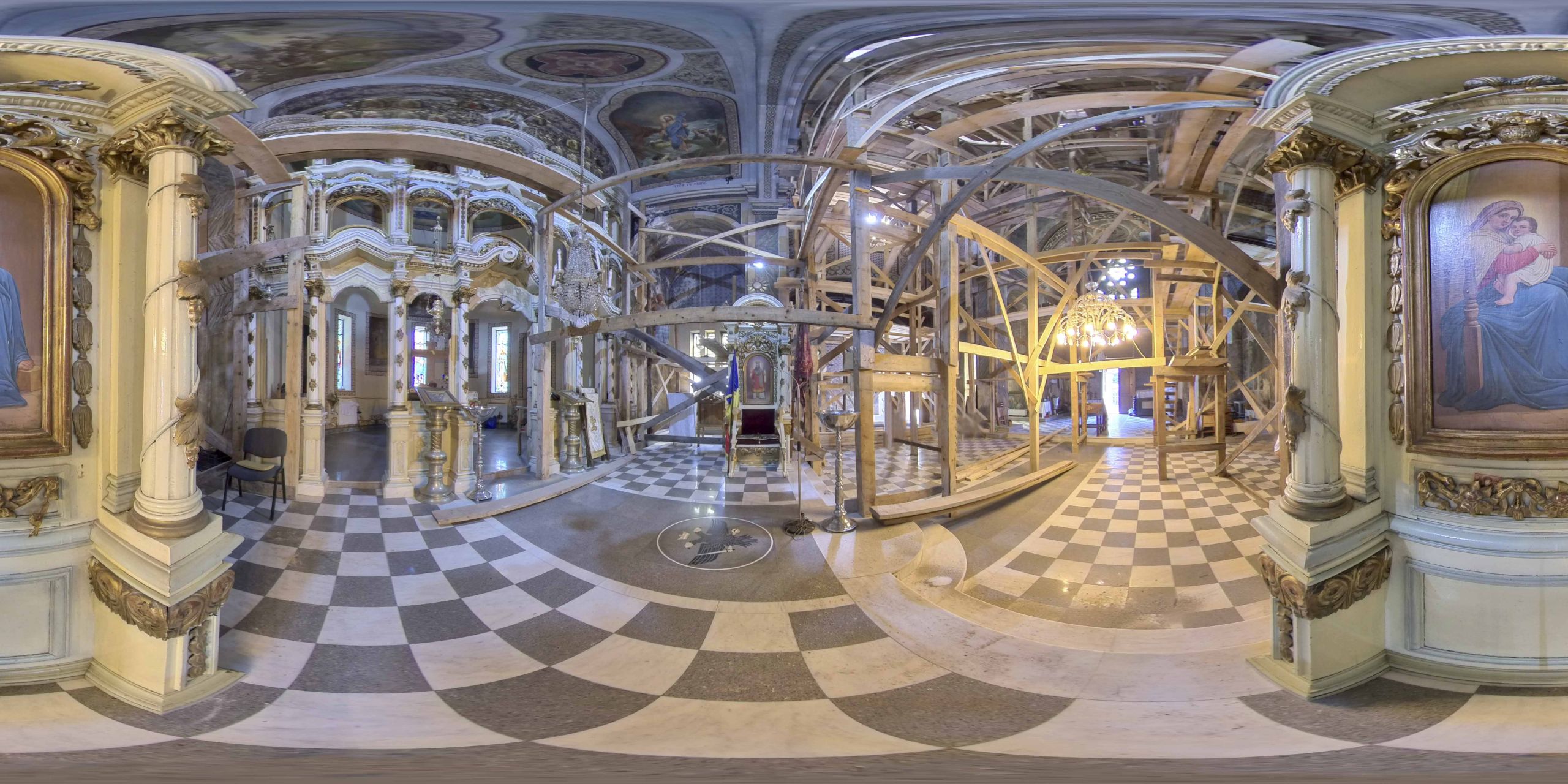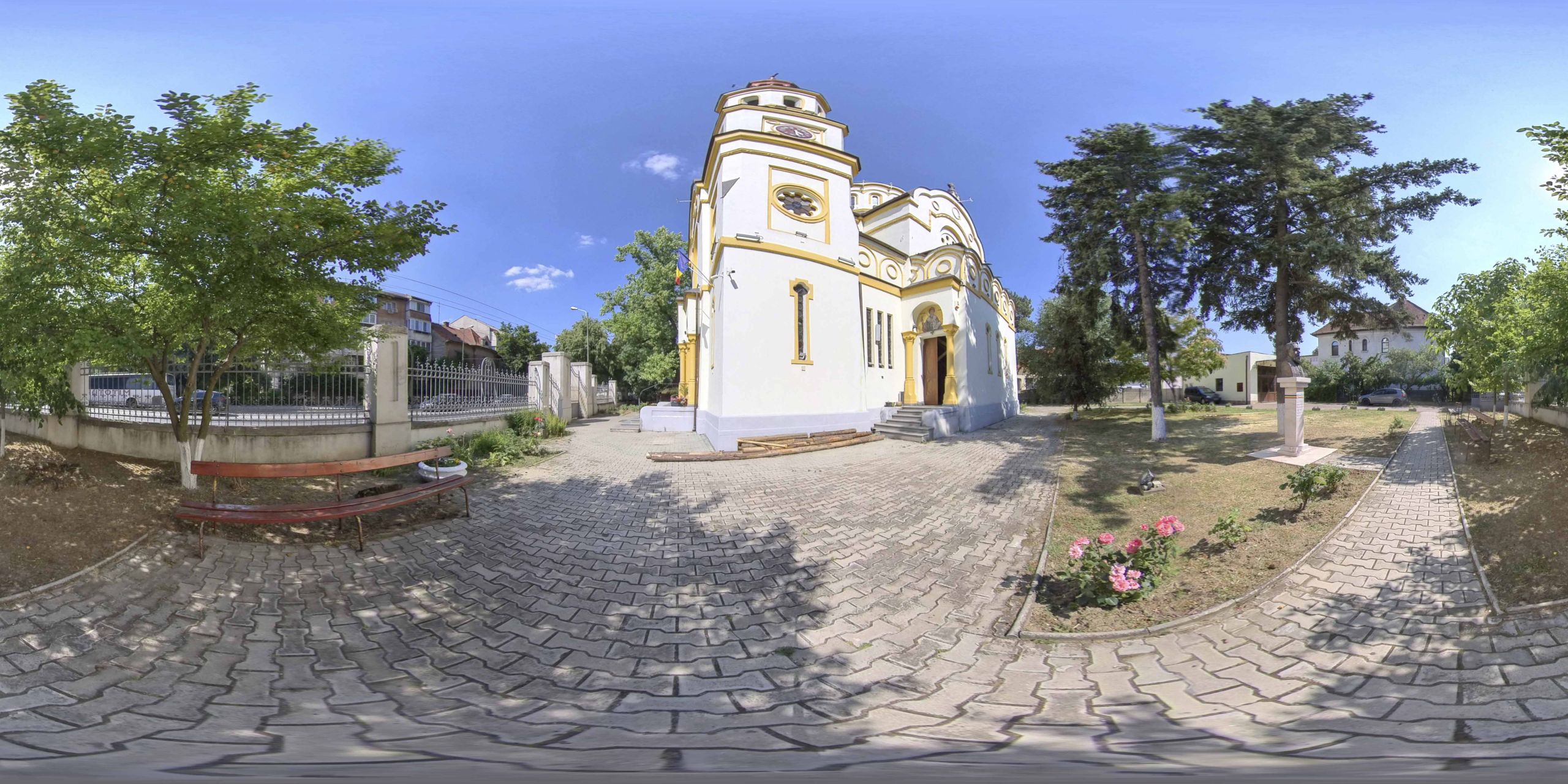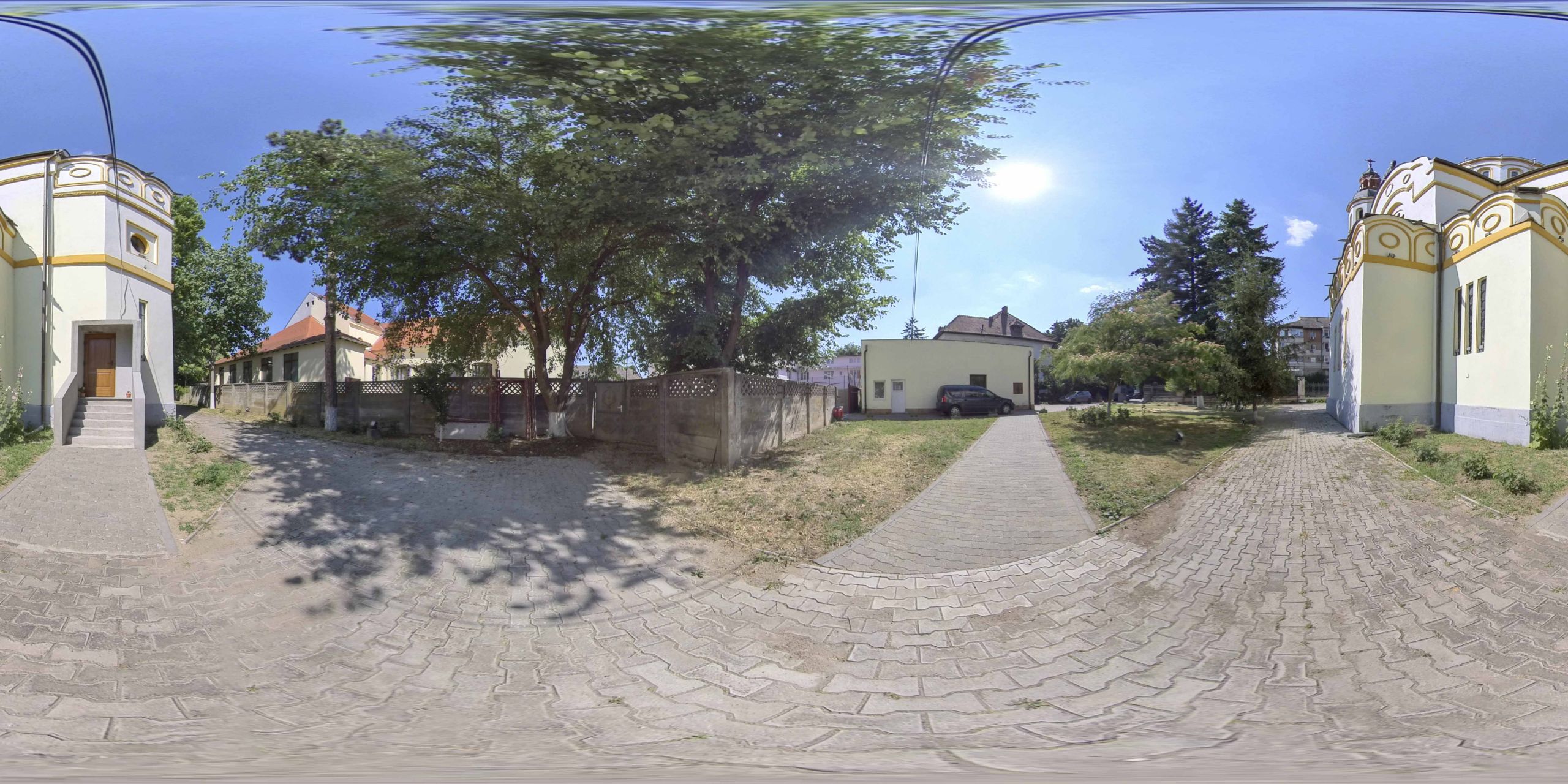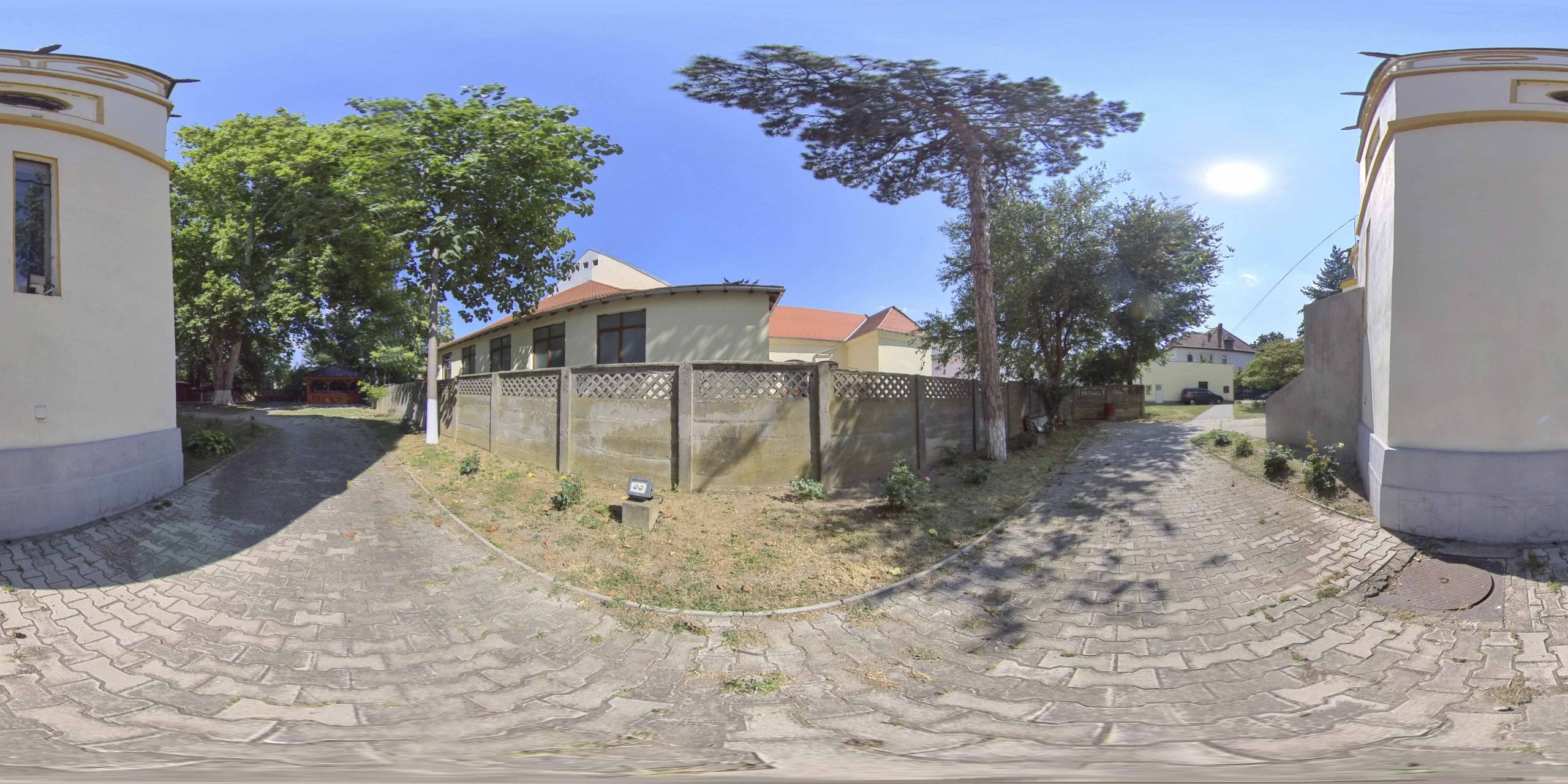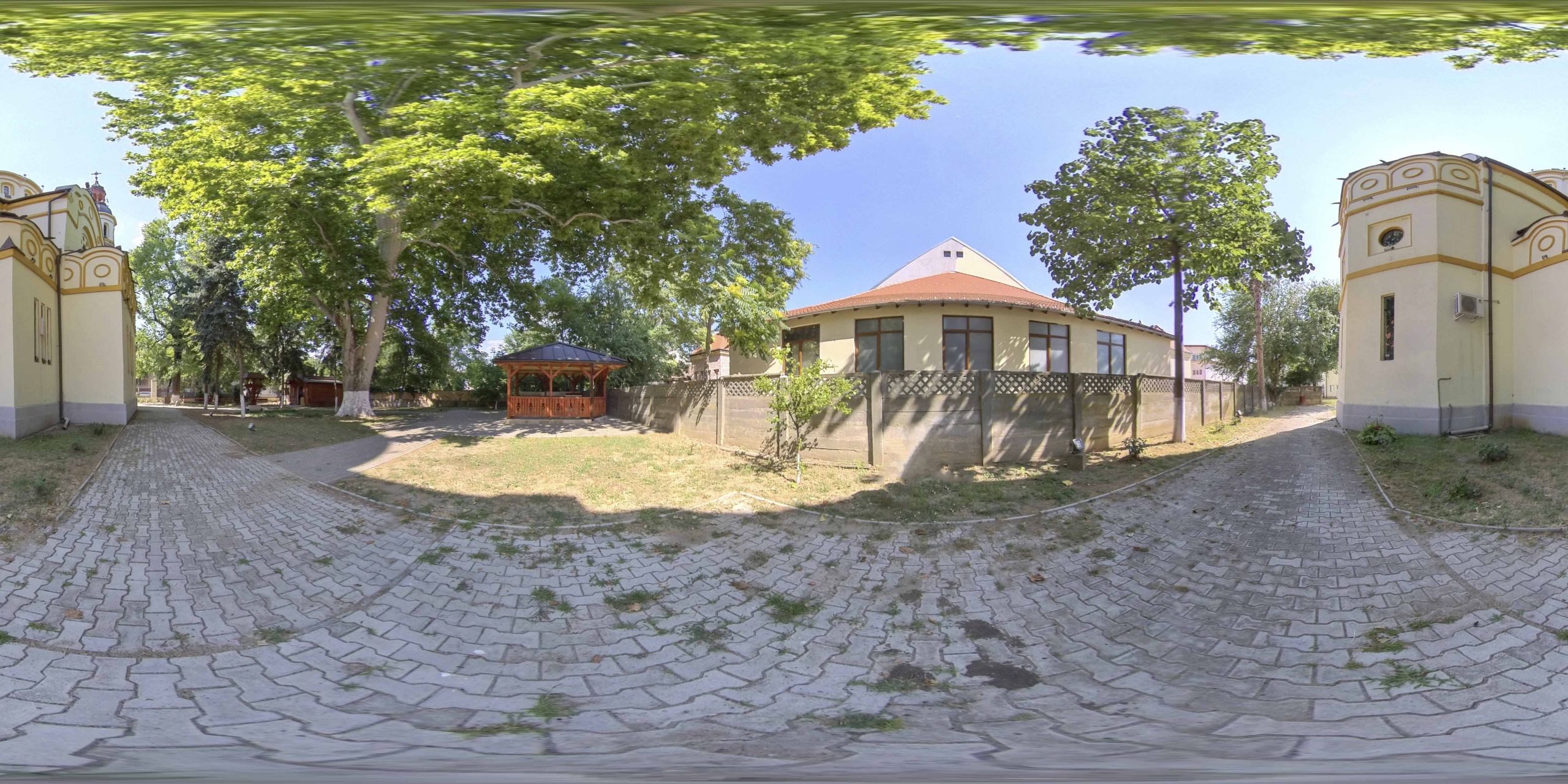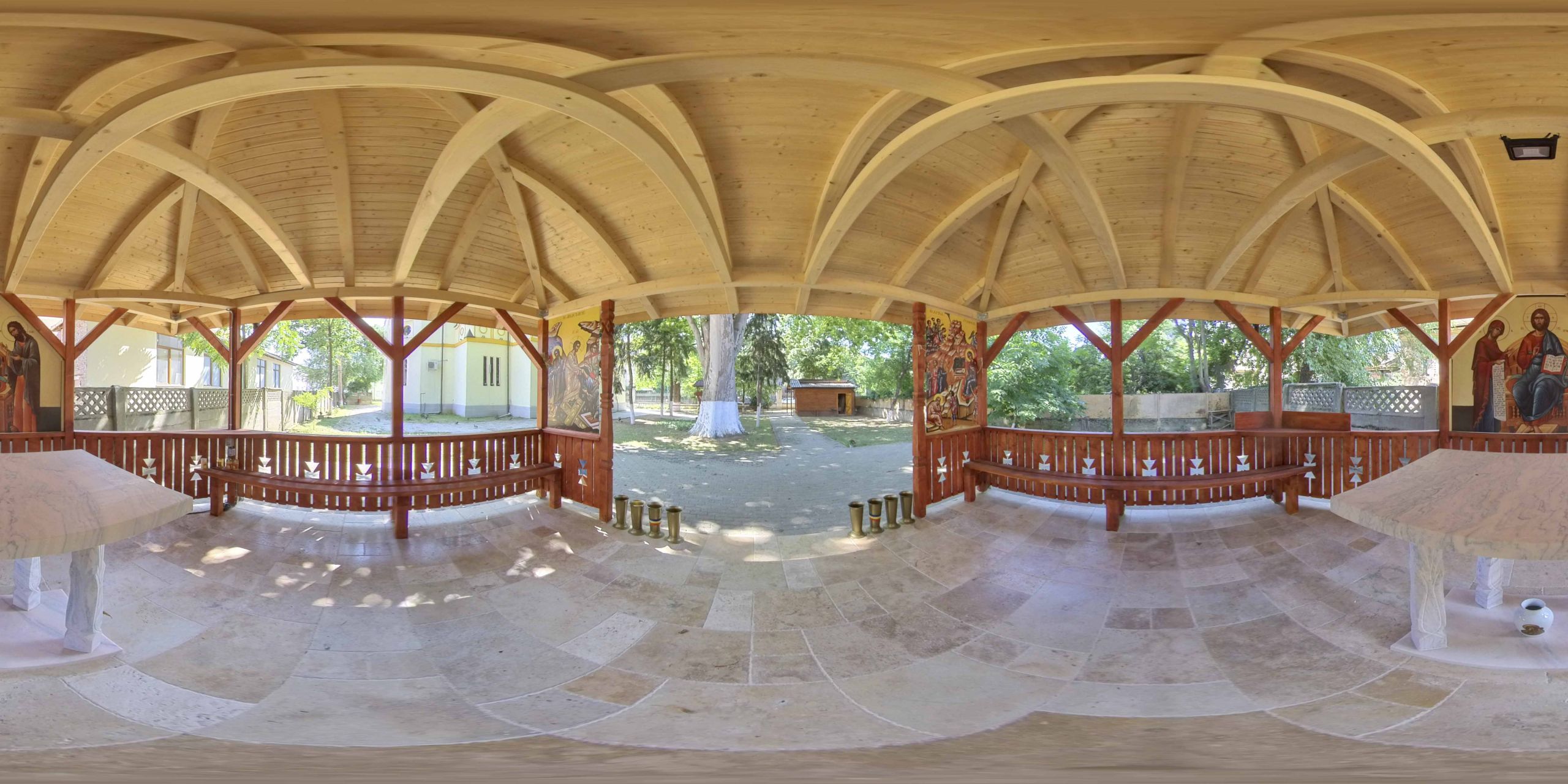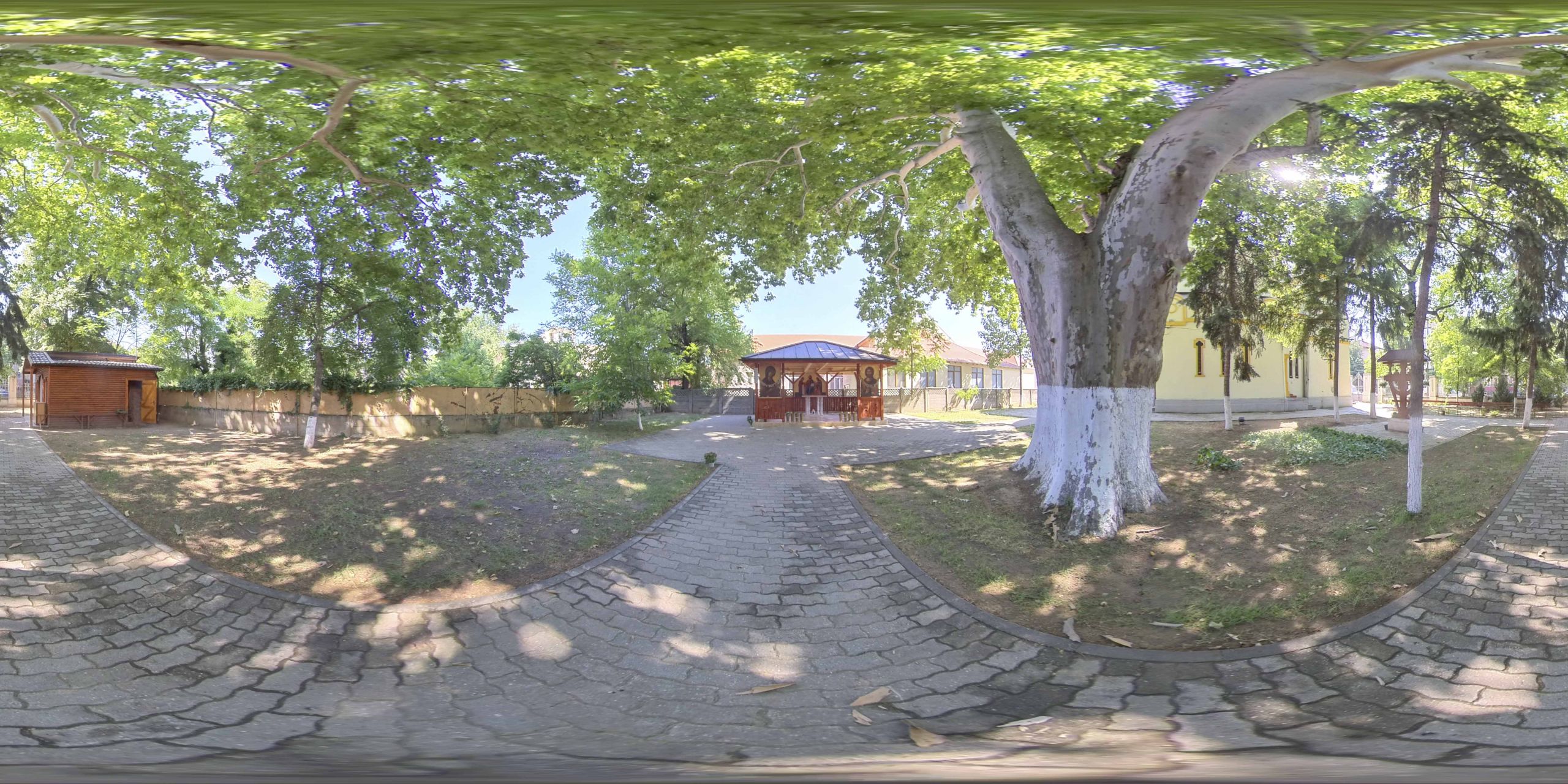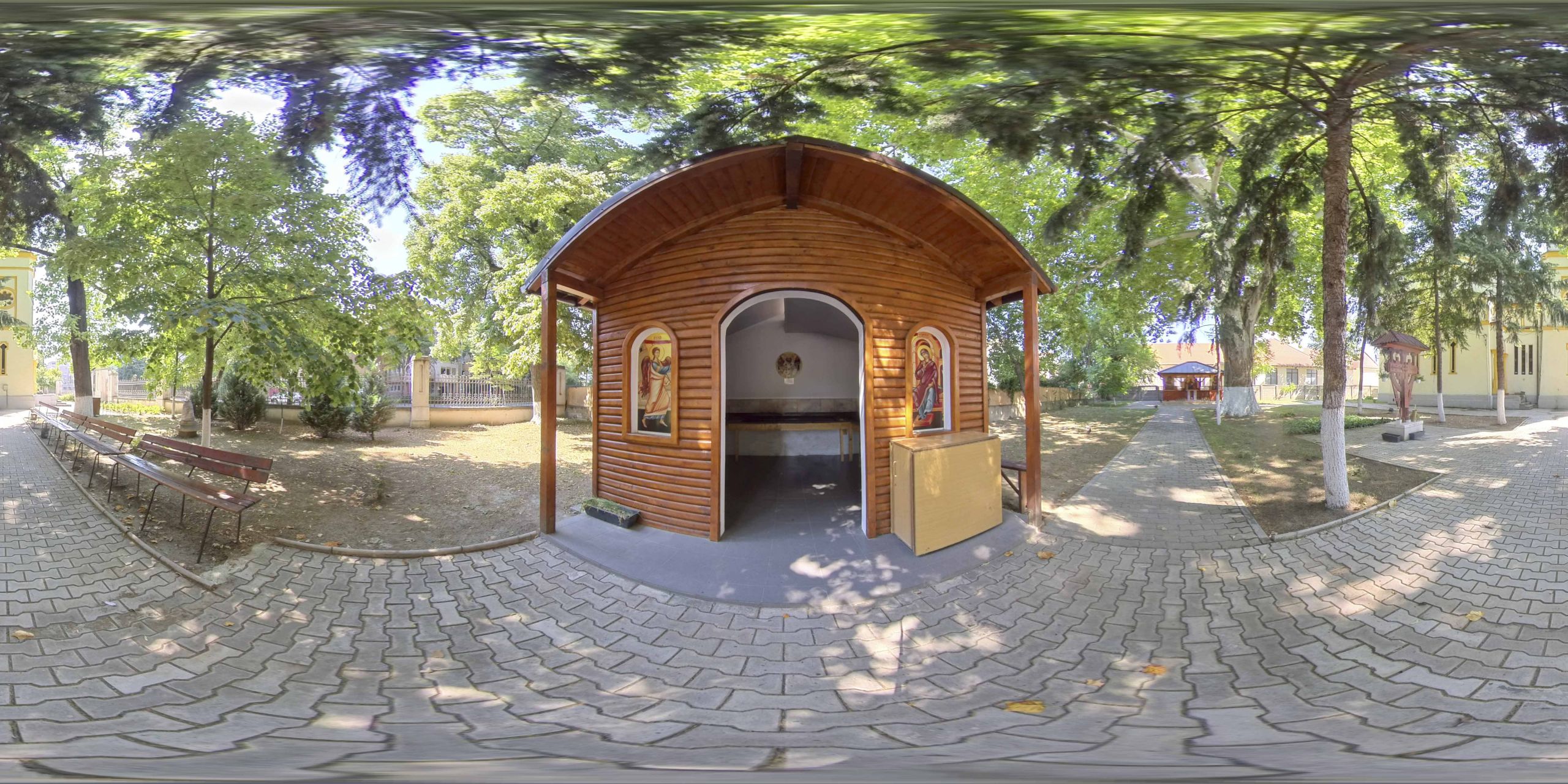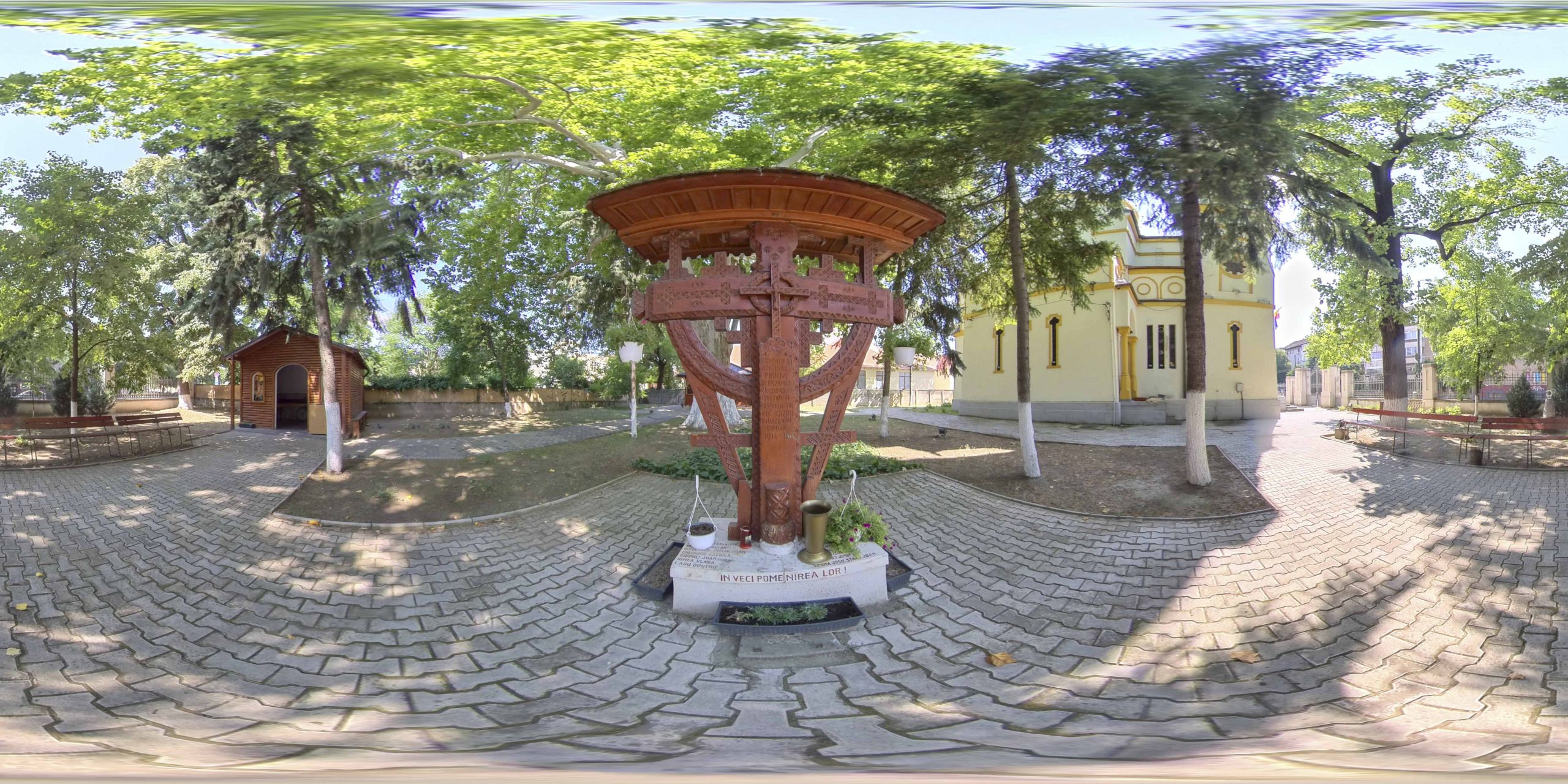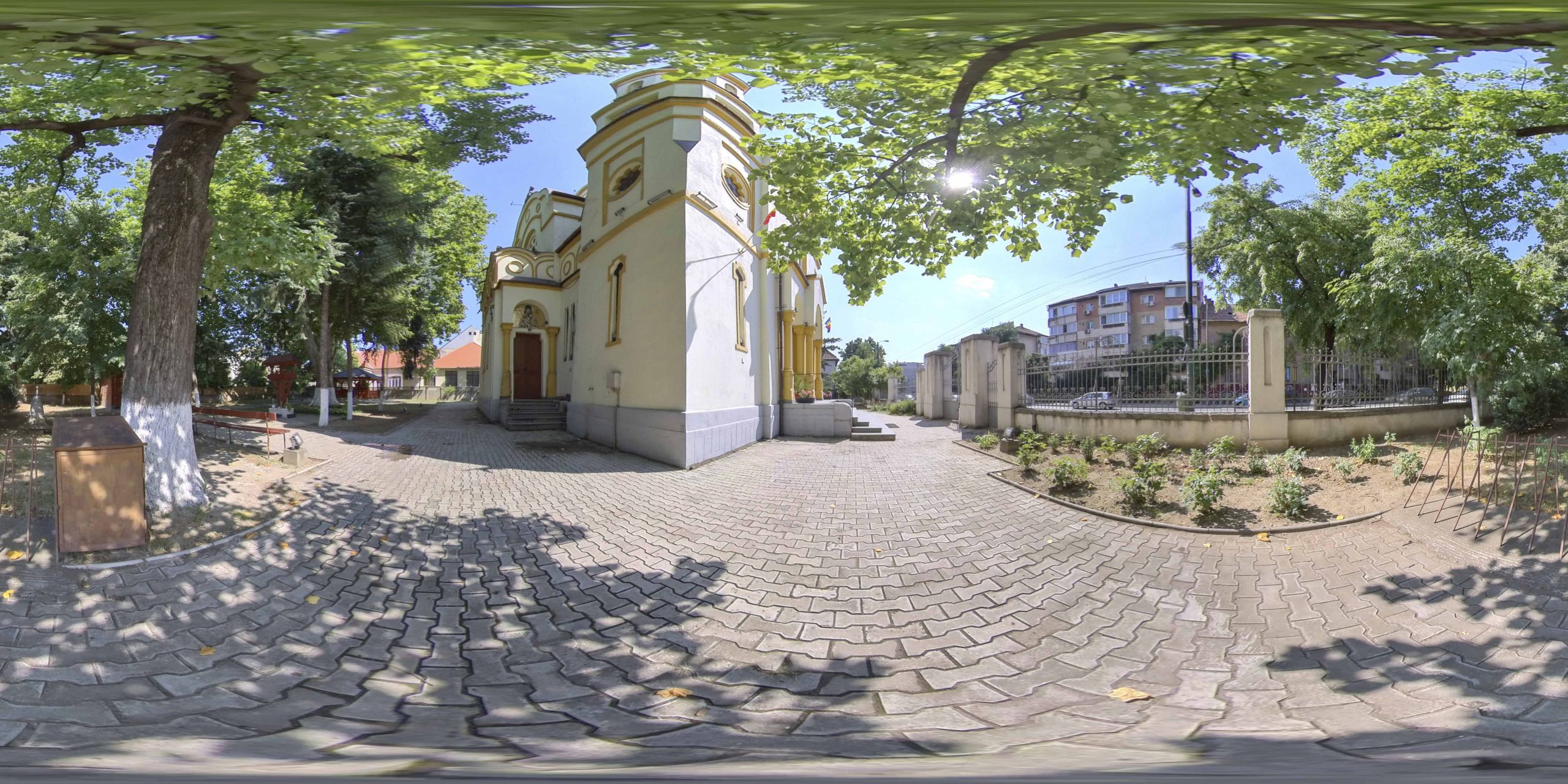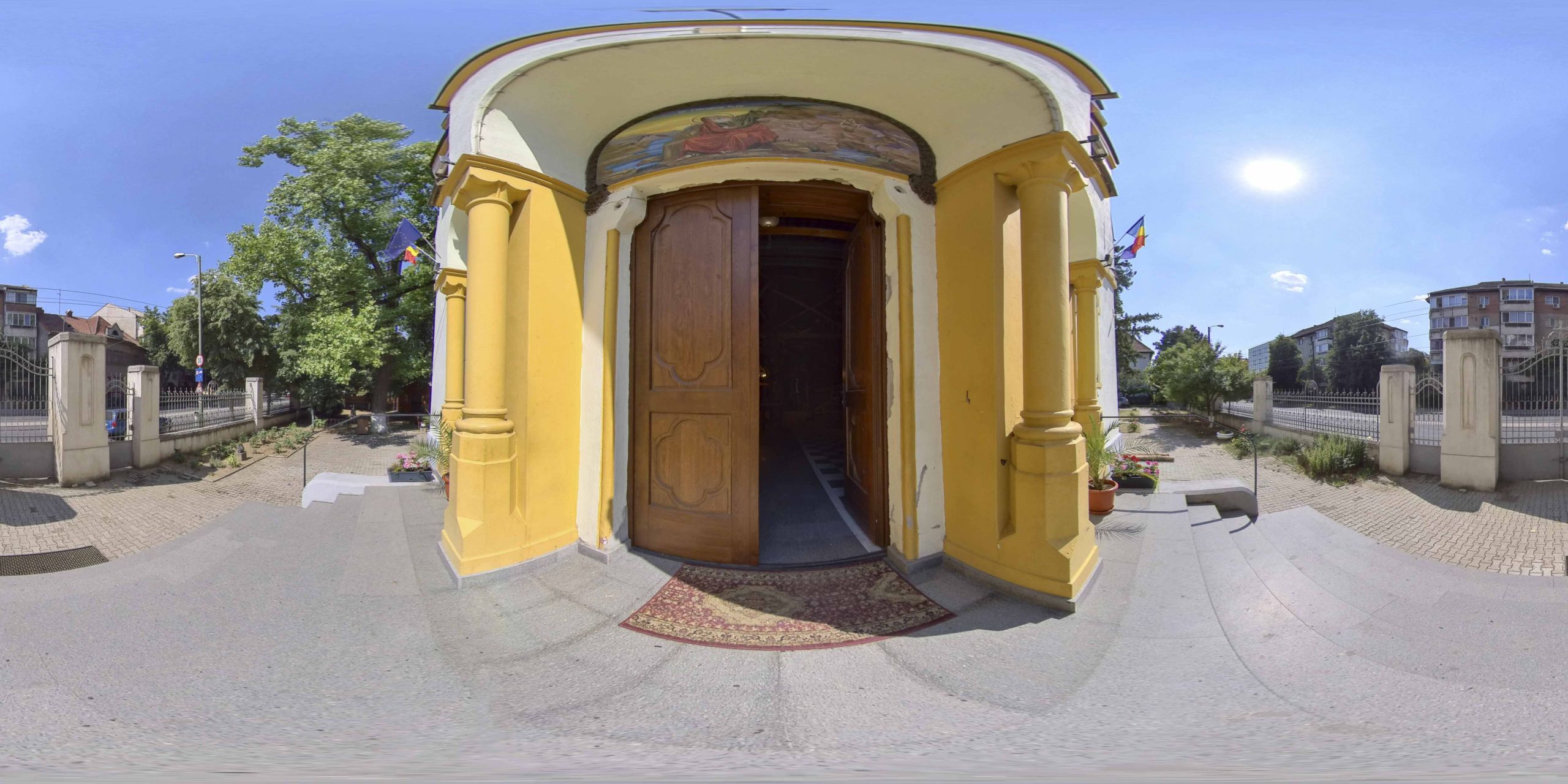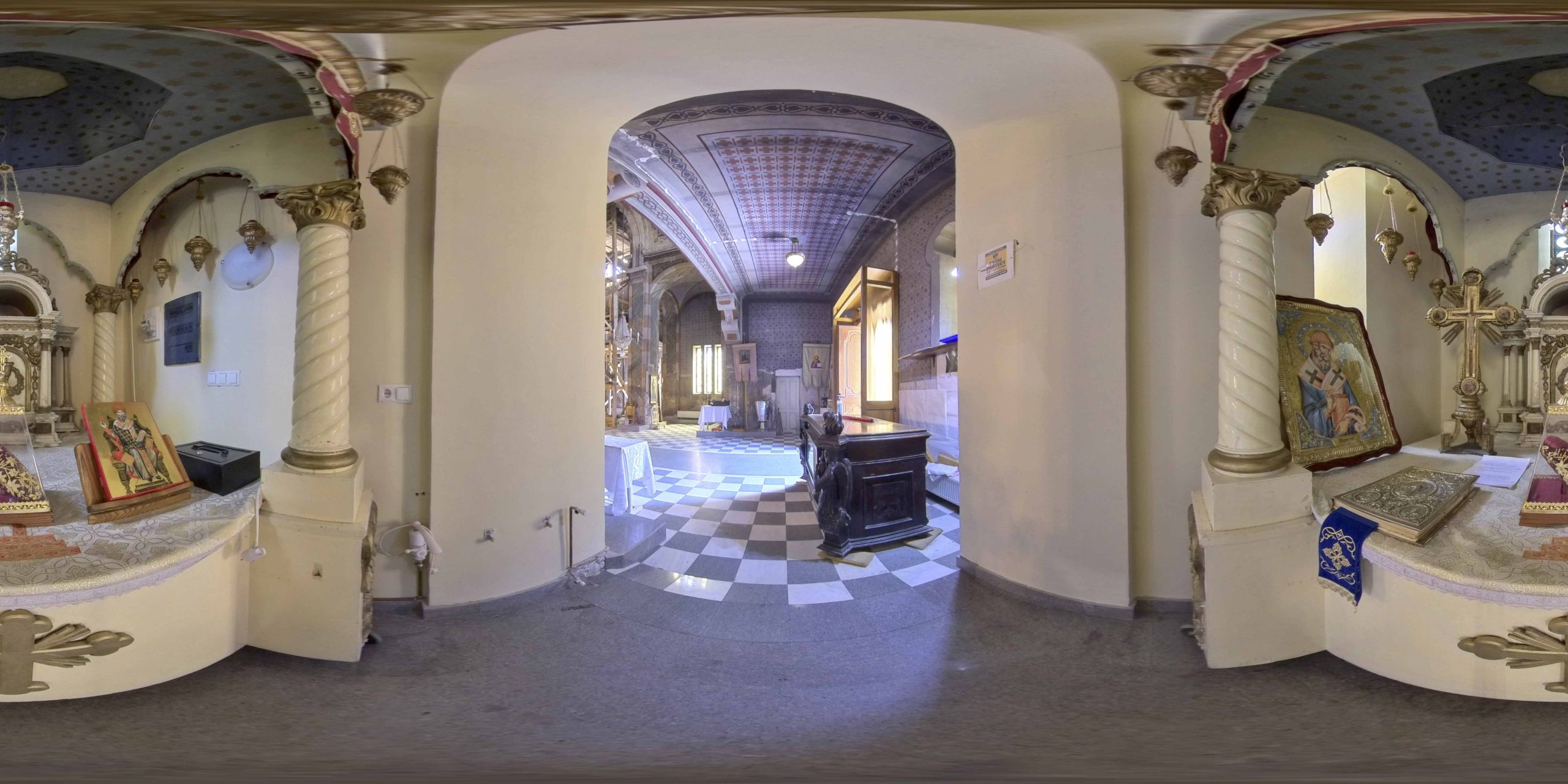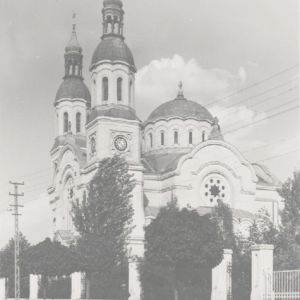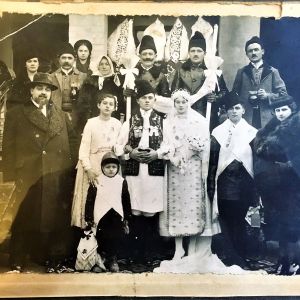The Romanian Orthodox Church
The new Romanian Orthodox Church was built in 1912, according to the plans of the chief architect of the city László Székely.
Listen to the audio version.
The old Romanian Orthodox Church, located in Sarmizegetusa Square, proved incapacitating in the last decades of the 19th century. In this context, there have been plans to expand it. This project was not carried out, as, in the context of the Bega regularization, an agreement was reached between archpriest Traian Putici and the city authorities. According to this agreement, given the fact that the old church constituted an obstacle to regularization, it was to be taken over by local authorities and demolished. Instead, a new larger church was to be built on Andrei Șaguna street. The new Romanian Orthodox Church was built in 1912, according to plans of the chief city architect László Székely and involved an investment of 72,000 crowns, coming from local budget funds in Timișoara.
Bibliography:
Josef Geml, The old Timișoara in the last half of the century 1870-1920, Cosmopolitan Art Publishing House, Timișoara, 2016.
The Romanian Orthodox Church
We moved to Timișoara in '25. It was a vacant parish in Fabric. There was the cathedral of Timișoara at the time, it was the only one when we moved, the cathedral was being built in Mehala. In Cetate there was none, in Iosefin it was built later, so after Mehala came Iosefin, and the Cathedral in the centre is a work that preceded the war.
Therefore, The church from Fabric fulfilled the function of a cathedral. And did you settle there, in Fabric? A parish house was built.... But the first house was in Elisabetin, on Ion Vasii Street. My father, Meletie Șora, being from Izvin, putting money after money, managed to buy a house in Timișoara, in view of a future settlement in Timișoara. So, I stayed there. After that, as it was difficult for him, being elected to the parish of Fabric, he bought a house in Mătăsarilor Street, in Vlașca Mala: when you cross the bridge next to the hydroelectric plant from that mini dam, enter the Lugojului path, Dorobantilor, ... Parallel to it is the street of the Mătăsarilor street, which leads to the cemetery in Fabric, where my father is buried. From Piatra Traian to the former Turkische Kaiser, then the tram goes and crosses a bridge. On the right bank of the Bega, turn slightly right and the first parallel street is the Mătăsarilor street. Now it's a street only with gypsies, but then it was a street only with notables, a street of the petty bourgeoisie. The house was built there, we moved there, and then the church parish house was built, to the left of the church, a two-story house for the two parish priests, with entrances on either side.
(...) Then we moved from there... My father sold that house and bought one on Samuil Vulcan, before reaching the bridge, the last street that runs parallel to Bega. Do you remember the neighbourhood on the left, when you cross the bridge, calling it Mica Veneție/Little Venice? Yes. When you were going towards the Hay Market or Badea Cârțan, there were tanners on the right bank of the Bega, you couldn't cross without holding your nose, to go through that neighbourhood, there were tanners of big beef hides there. It was a district of tanners, very tightly knit as a profession and as an organization, I don't know what confraternities they were...And ethnically? Ethnically, the Jewish neighbourhood between Traian Square, the left bank of the Begai and this street, the Dorobantilor street. Which was going through the Prințul Turcesc on the bridge? About right in front of the Romanian church. There were Romanians in the back, but a Jewish ghetto in the front. Between Traian Square, Hay Market, Bega, there was a Jewish neighbourhood... that was still alive... It was alive, with traditions... Shops, commerce... Yes. In a very good neighborhood, in perfect cordiality. Did people buy products from them? Of course they did. In any case, things circulated from one ethnic area to another, I remember, it was a treat for us Jewish Paska, so for the Jewish Easter we had our morning coffee with milk with Paska. That was a ritual. It was the rabbi who would send it to my father. Who was the rabbi then? I don't know, but my father was on very good terms with both the Catholic clergy and the Unitarians.(....)
(...)All individuals with a cultural appetite fed on what came, from imports, so to speak, not from their own values, although there was a life of a cenacle, my father himself was part of a cenacle, in which were all the intellectuals from Timisoara gathered once a week, read the productions… And where were they meeting? At one of their places. There was a very well placed engineer, I don't remember his name, but it's impossible not to be known, for someone who knows the history of Banat... Mardan, he had a large apartment, he had the means... to find a cake there, to serve a drink, a cup of coffee... It seems to me that he had his house in Iosefin. And what kind of society was it? Priests.. Lawyers, doctors, so liberal professions... And they all were writing? Some were just amateurs... There were discussions too, not just reading... And political ones? I think they were from apart from politics, that is, they were meeting... it was a ground on which they could confront each other without adversity. And ethnically? Were they more Romanian? Romanian. It was the Romanians, the others were probably organised differently and maybe even better, because, at a certain point... they had more prominent, better known figures. This was the cenacle of the residents from Banat. (...)
Mihai Șora, born in 1916 in Ianova, Timiș - excerpt from the interview conducted by Smaranda Vultur in Băile Herculane in 2001, The oral history and anthropology group archive, coordinated by Smaranda Vultur.
Do you know the Șora family from Timișoara? Well, of course, because Mihai Șora was my sister's classmate. He came to our house all the time. We met then and saw each other again afterwards. He went to Paris with his wife when I was in '39. We used to walk with him, with Cioran and Eugen Ionescu all over Paris. Those were beautiful years, but we couldn't go back there either, with that war. Then I lost my brother as well and we each went our own way.
Excerpts from the interview published in Steluța Crăiniceanu-Imbroane (born in 1920 in Timișoara) interviewed by Smaranda Vultur, in 1999, in Bucharest - Excerpts from the interview published in Dr. Avram Imbroane, Testament Politic, 1st edition, Ed. Marineasa, Timisoara, 2003, Preface by Constantin Jinga, Foreword by Mihai Șora, Chronology by Remus Jurca-Unip, In memoriam by Horia Musta, Edited by Adrian Onică and Roxana Pătrașcu
We moved to Timișoara in '25. It was a vacant parish in Fabric. There was the cathedral of Timișoara at the time, it was the only one when we moved, the cathedral was being built in Mehala. In Cetate there was none, in Iosefin it was built later, so after Mehala came Iosefin, and the Cathedral in the centre is a work that preceded the war.
Therefore, The church from Fabric fulfilled the function of a cathedral. And did you settle there, in Fabric? A parish house was built.... But the first house was in Elisabetin, on Ion Vasii Street. My father, Meletie Șora, being from Izvin, putting money after money, managed to buy a house in Timișoara, in view of a future settlement in Timișoara. So, I stayed there. After that, as it was difficult for him, being elected to the parish of Fabric, he bought a house in Mătăsarilor Street, in Vlașca Mala: when you cross the bridge next to the hydroelectric plant from that mini dam, enter the Lugojului path, Dorobantilor, ... Parallel to it is the street of the Mătăsarilor street, which leads to the cemetery in Fabric, where my father is buried. From Piatra Traian to the former Turkische Kaiser, then the tram goes and crosses a bridge. On the right bank of the Bega, turn slightly right and the first parallel street is the Mătăsarilor street. Now it's a street only with gypsies, but then it was a street only with notables, a street of the petty bourgeoisie. The house was built there, we moved there, and then the church parish house was built, to the left of the church, a two-story house for the two parish priests, with entrances on either side.
Mihai Șora, born in 1916 in Ianova, Timiș - excerpt from the interview conducted by Smaranda Vultur in Băile Herculane in 2001, The oral history and anthropology group archive, coordinated by Smaranda Vultur.
